Categories: Electrician Secrets, Electrician at home
Number of views: 40602
Comments on the article: 3
How to find out how much power a cable or wire can withstand
When connecting electrical appliances to the supply network, one of the main conditions is the selection of a cable or wire of suitable section. But sometimes it happens that you already have some kind of conductor, and you are not sure whether it is suitable for a specific task.
If you connect too much load on the cable, then it will warm up, and maybe even overheat. Because of this, the insulation will melt, which is dangerous with a short circuit, electric shock and fire. This begs the question: "how do you know how much power a cable or wire can withstand?". Let's figure it out!

What affects the permissible power?
It is immediately worth noting that the cross-section and power of the cable are, in principle, not interconnected. For the conductor, the decisive role is played by permissible continuous current. These values are described in the PUE section 1, chapter 1.3. The fact is that if it can withstand a current of 16A, then in a 220V network it is 3.5 kW, for 380V it is 10 kW, and in a 12V network it is only 192W. Therefore, it is reasonable to talk about the permissible power for the cable only in the context of a known voltage.
To convert kilowatts to watts you just need to divide kW by 1000.
To convert Watts to Amps, you need to divide Watts by voltage in volts.
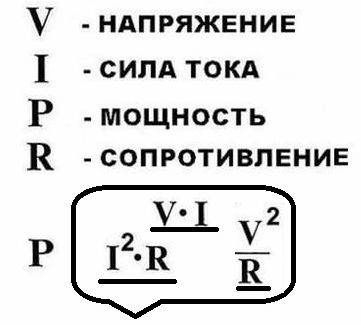
And for a three-phase network, it is also divided into 1.73 (root of 3) and CosF.

CosФ - power factor, indicated on the plate located on the body of most electrical appliances.
Wire cross-section table and allowable current
There are special tables that describe the correspondence of the cable section, current, voltage and power. But the information in them is not always valid for the selection of cables.

If for calculations of apartment wiring, where the line length rarely exceeds 15-20 meters between the extreme points, and the ambient temperature is usually about 20-25 degrees, this is still true ...
But imagine a situation when you are going to put up a fence on a section of a private house, and you have to use a power tool when installing it and a welding machine, also a concrete mixer, and besides, the heat in the sun on the street is far beyond 30 degrees Celsius. Then you need a good extension cord to connect it in the garage or in the house, and you will work around the entire perimeter of the site.
I think this is a familiar situation for you.
All of the above included a number of factors affecting how much power the cable can withstand, namely:
1. The length of the line.
2. The temperature of the environment and the conductor itself.
Both factors affect the cable resistance, and this, in turn, affects power loss and conductor heating. If you select a conductor with too small a cross section for this power, then under load the voltage at its end will sag. It is undesirable to allow losses of more than 3-5%. In lighting circuits, a 10% voltage drop is permissible.
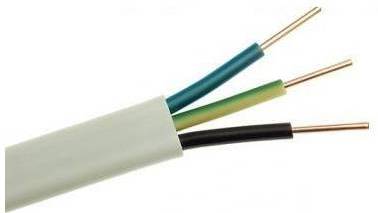
Resistance, length, material, temperature how are connected?
The resistance of the conductor is determined by the formula
R = po * L / S
Where Po is the resistivity of the metal, Ohm * sq. Mm / m, L is the length in meters, S is the cross-sectional area in sq. mm
For example, the specific resistance Po of copper is 0.018, and that of aluminum is 0.029. Therefore, you could see in the table above that with the same cross section, the copper conductor can withstand more current than aluminum. This is due to losses, we will talk about them below.
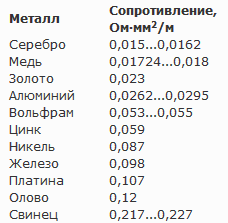
Also in the formula appear two more quantities - the length and cross-sectional area. The greater the length and the smaller the cross-sectional area, the greater the resistance. Accordingly, with an increase in the cross section at a constant length, the resistance decreases, also with a decrease in length.
There is an interesting analogy with the highway: the more lanes for driving in one direction, the faster cars go, and if there are a lot of cars (high current) and there is only one lane in each direction, then they will be pushed in a traffic jam.
In metals, the resistance also increases with increasing temperature, and accordingly the conductivity decreases, in simple words, this is due to the fact that when heated, the particles in the metal and charge carriers begin random motion, which is why they more often collide.
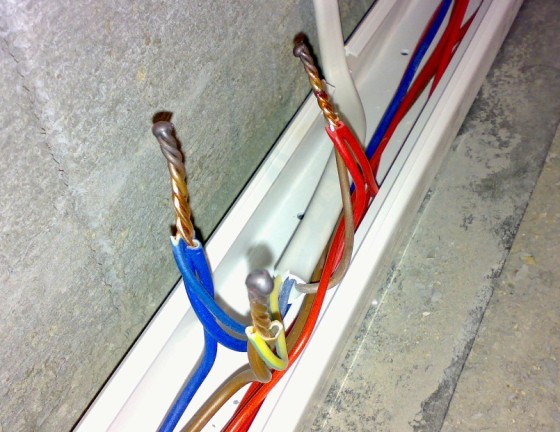
Losses
To summarize, what the losses depend on:
1. Cable material (aluminum or copper).
2. The length of the line.
3. The cross-sectional area.
4. The ambient temperature.
5. Laying several cables in one pipe. In this case, there are no conditions for their cooling, moreover, the temperatures of adjacent cables affect each other in a worse way.
You need to select the cable so that the resulting losses are as small as possible. Ideally, up to 3-5%. In extreme cases, if there are no other options, then up to 10%. Indeed, with a voltage in the network of 220 volts 10%, this is already 22V losses and 192V at the output, provided that the network is not already squandered. And at a current of at least 10A, this is 220W of losses only on wires. This is described in GOST 721 and GOST 21128.
Section
Let's move on to the essence of the question "How do I know the power that the cable can withstand?". Based on the foregoing, it is necessary to determine the cross section of the conductor. To do this, measure its diameter. It is more convenient and faster to do with a caliper. This method is suitable for any sections and wires.
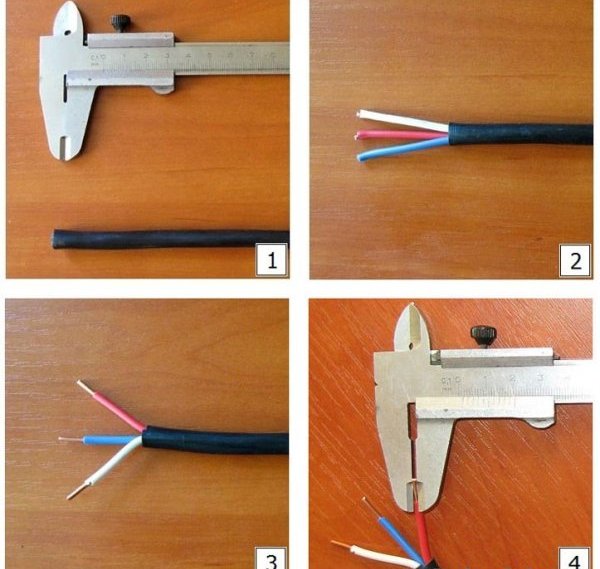
If the wire is with a single-wire (monolithic) core, then you just need to measure its diameter. If the core is flexible multi-wire, they measure the diameter of one wire, find its area and multiply it by the total number of wires in the wire. So find the common cross-section of cables and wires.
To calculate the cross-section by diameter, you need to square it and multiply by 0.785.
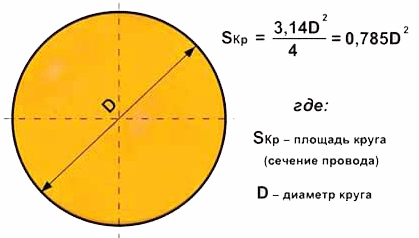
How to measure the diameter of the cable with a ruler?
For thick cables, there is no particular problem, you just need to attach the ruler to the core, but with thin cables this will not work. Therefore, use the following method.
It is necessary to tightly wind a wire 10 on a screwdriver or other oblong object, and then measure the length of the resulting spiral with a ruler and divide it by the number of turns. To determine the cross section of a thin vein from a multi-wire core, it will be necessary to wind more 30-50 turns so that it is more convenient to measure.

When you already know cable cross-sectional area, you can look in the table and find out its permissible current. If the line is not long (up to 10 meters) and the current is greater than the current of the expected load, then you can safely use it.
How to simplify the calculations?
To avoid calculations of losses and cross-sections, you can use online calculators or applications for smartphones, especially since they work offline and he is always with you. For example, for users of the Android OS there is a Mobile Electric application, it has functions:
1. The calculation of the resistance of the conductor with the known: material, cross-section, length and temperature.
2. Calculation of the length of the conductor with the known: resistance, temperature and cross-section.
3. The calculation of the cross section for known: length, voltage, permissible losses, core material current and temperature.
4. Calculation of the maximum length of the conductor at known: voltage, permissible losses, core material, current and temperature. Other.
They will allow you to assess the allowable power and choose the right wire for a specific power.
In addition to this application, there are others, I examined what I use myself in work.
Conclusion
To summarize. To find out if the cable or wire can withstand the load, you need to determine:
1. The material from which the cores are made.
2. Their cross section.
3. The length of the line.
4. The load current.
Then make calculations or use calculators.
See also at bgv.electricianexp.com
:
